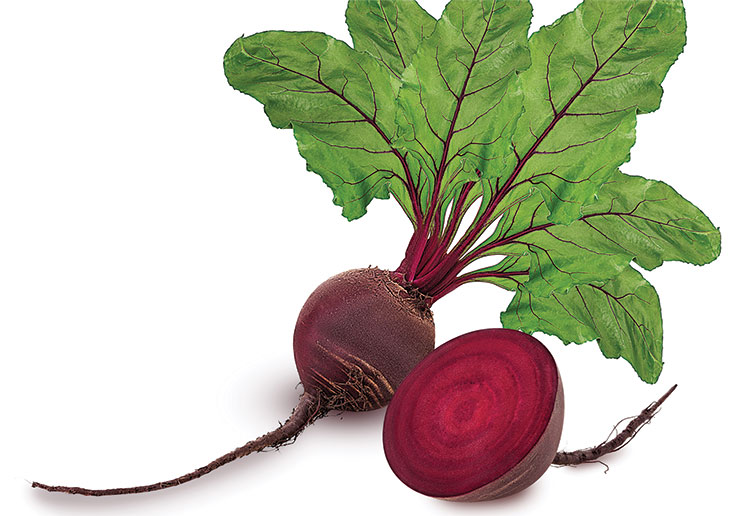
Beets have been making a splash of late in the food world.
A recent resurgence in popularity because of health and nutrition studies has brought the ancient vegetable’s reputation to a whole new level. According to a 2016 Los Angeles Times article, “Trend alert! Why beets are the hot new ‘superfood,’” beetroot is “dense with nutrients, can help reduce blood pressure and anemia, and improve circulation and cognitive function.”
Studies also show that beets may help prevent cancer and can improve digestion, strengthen immunity and boost athletic performance.
Food manufacturers have caught onto the trend, making such products as beet juice, dehydrated beet chips and concentrated powders that are sold as dietary supplements.
Why Are They So Good for You?
According to the USDA, beets contain significant amounts of vitamins and minerals such as potassium, sodium, iron, folate, phosphorus, magnesium, calcium, vitamin C, and B vitamins such as thiamin, niacin and riboflavin.
Beets are rich in antioxidants, getting their deep color from the betalain pigment, which has potent anti-inflammatory properties. They contain many phytochemical compounds, which have protective or disease-preventive properties, and also are a good source of fiber. Beet greens are also highly nutritious and contain beta-carotene, lutein and zeaxanthin, important for eye health.
Roasted Beets & Sautéed Beet Greens
These recipes make two good side dishes and up the nutritional value of any meal. Here, we treat the mature beet greens as one would chard or spinach. You’ll need to purchase the beets with their tops. Serves 6.
Beets
- 12 beets with their tops
- 1 teaspoon olive oil
- 4 teaspoons butter
- Salt and pepper to taste
Beet Greens
- Beet tops
- 2 tablespoons olive oil
- 1 tablespoon butter
- 2 cloves garlic, minced
For the beets: Heat oven to 400 degrees F. Remove tops of the beets and scrub the roots well under running water, then dry. Toss beets in bowl with olive oil, salt and pepper. Wrap each beet in aluminum foil. Roast for 50 to 60 minutes, until they are tender to the touch. Let cool, and then hold each beet in paper towel and rub the skin away. Slice in ¼- to ½-inch pieces. Add butter, salt and pepper.
For the greens: Wash greens well and chop. Add butter and olive oil to pan. When butter is melted, add garlic and sauté for a minute or so to soften. Add the wet greens to the pan and sauté until well wilted.
Facts and Folklore
Beets have been nourishing humans since ancient times — the earliest signs of cultivation were approximately 4,000 years ago in the Mediterranean region. Humans originally ate only the beet leaves, similar to chard, which is in the same species, Beta vulgaris. The root was generally used medicinally until Roman times, and became a popular food when French chefs discovered its potential in the 19th century.
Historically, beets have been considered an aphrodisiac. Ancient Romans believed that they promoted amorous feelings, and in Greek mythology, Aphrodite, the goddess of love, ate beets to enhance her appeal. This folklore probably came about because beets are a natural source of tryptophan and betaine, both of which promote a feeling of well-being.
Growing Beets
Beets are a cool-season crop that can be grown over most of the U.S., including the warm climates of hardiness zones 8 through 10. They prefer well-drained sandy loam to silt loam soil with a pH between 6.5 and 7.
Last year, longtime farmer Jack Wallace of Edinburg, Texas, added beets to his commercial vegetable operation in the Rio Grande Valley.
In December and January, he planted 60 acres of beets, and with some trial and error and luck with the Valley’s sandy soil, was able to harvest a high-quality crop in April and May.
Wallace’s decision to grow the root came about because of a buyer wanting to process the vegetable into beet powder, a popular item among health enthusiasts.
“I never sought out beets to eat until I started to grow them,” says Wallace, a longtime Texas Farm Credit customer, who plans to increase his beet acreage. “Now, with all the information I’ve gained about the nutritional value of beet powder, I’m thinking about trying it out!”
– Staff